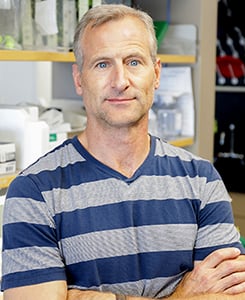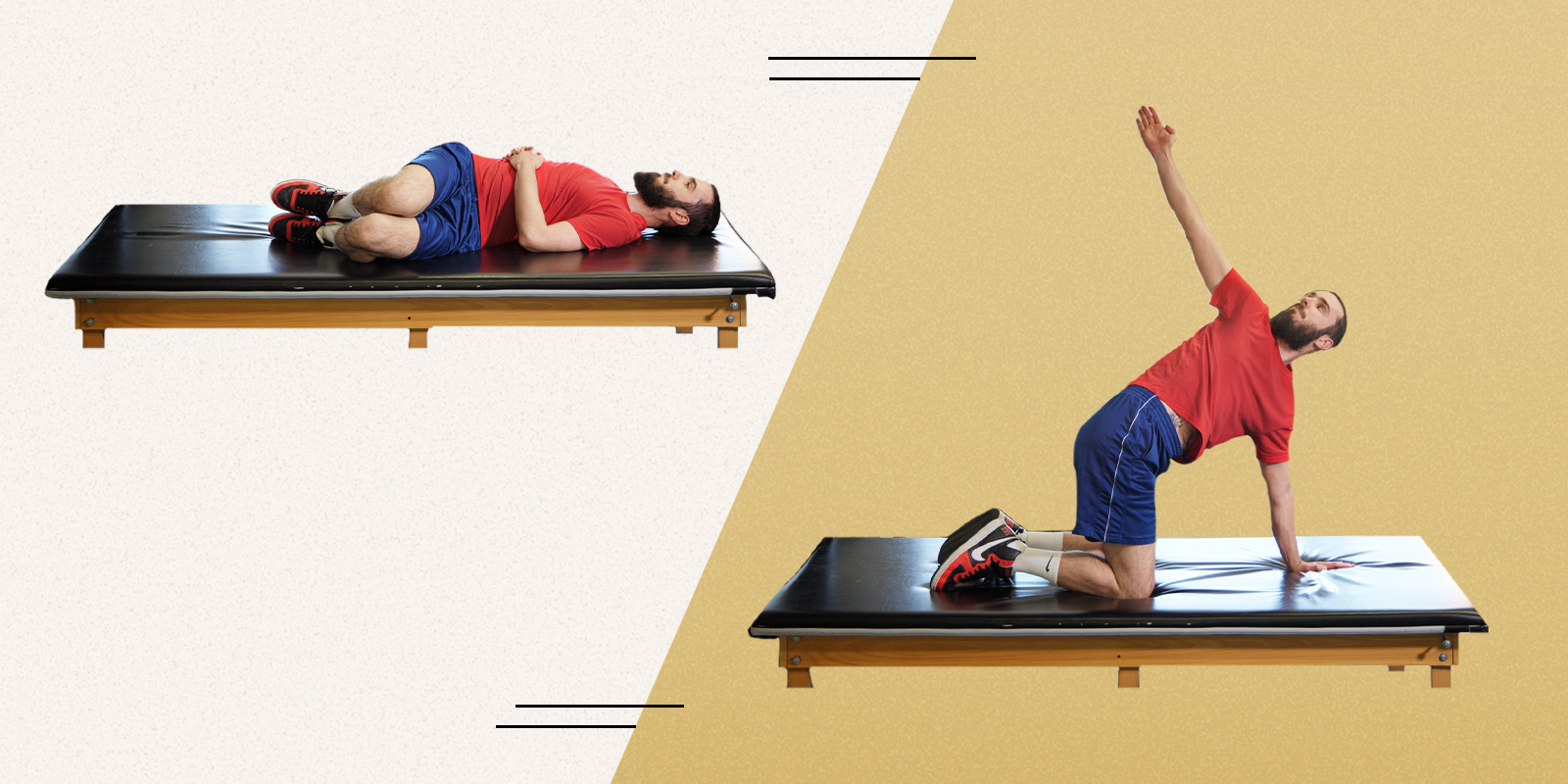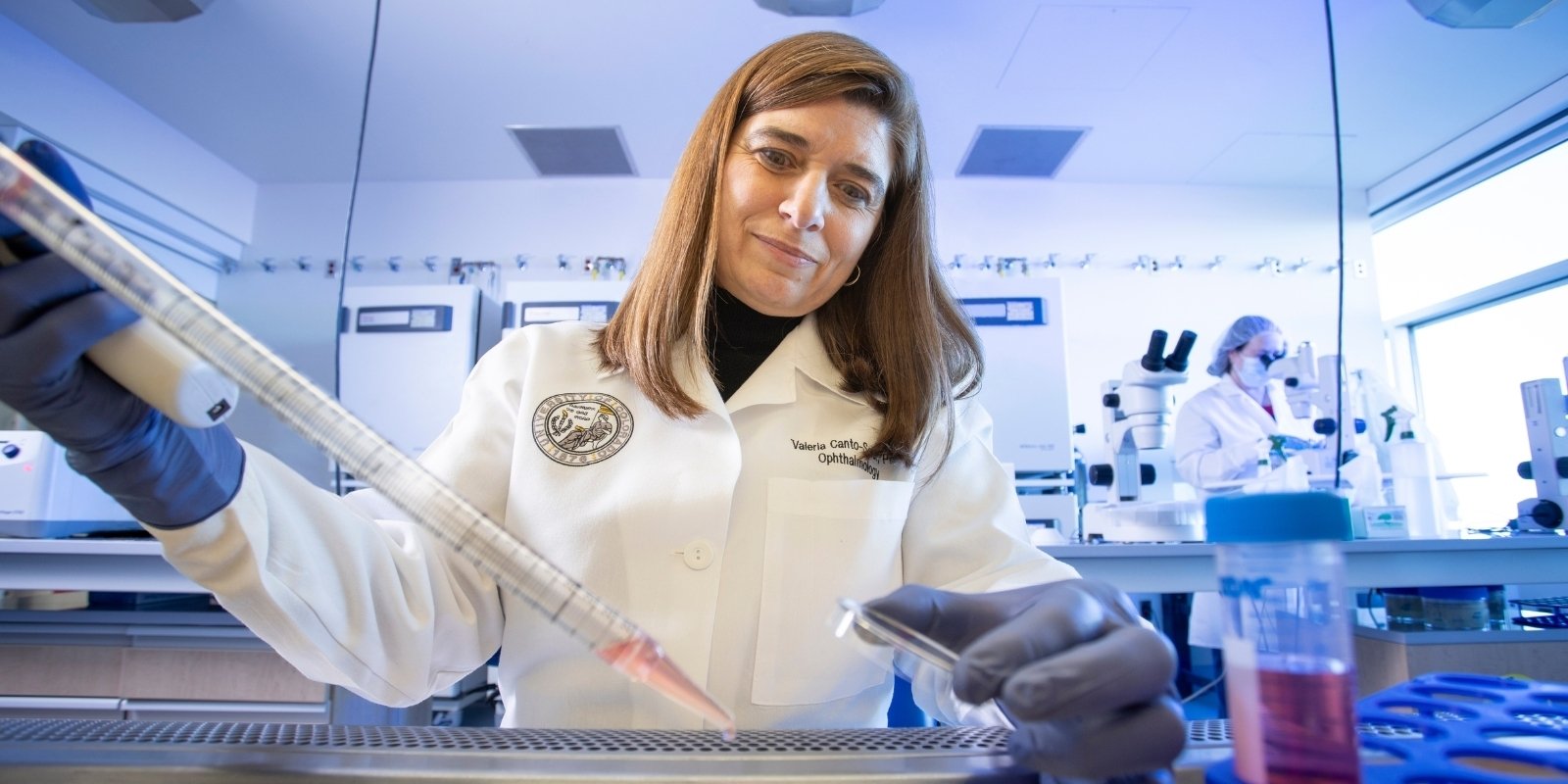Herd immunity to a germ occurs when enough people become immune to minimize the spread of the virus. Immunity occurs either through being infected naturally or through vaccination. Can we stake our hopes of conquering COVID-19 on herd immunity via widespread infection?
“No,” came the resounding answer from a panel of experts at a recent Department of Medicine grand rounds through the School of Medicine at the University of Colorado Anschutz Medical Campus.
The panel was composed of Rosemary Rochford, PhD, professor of immunology and microbiology and adjunct professor of environmental and occupational health; Ross Kedl, PhD, professor of immunology and microbiology in the CU School of Medicine; and Florian Krammer, PhD, professor of microbiology at the Icahn School of Medicine at Mount Sinai in New York City.
Rosemary Rochford
For SARS-CoV-2, the virus behind COVID-19, Rochford said that 70% of the United States population would need to become infected in order to gain herd immunity. Krammer said we are nowhere near that level of infection. “It would take a lot more deaths to reach herd immunity levels. I don’t think it’s worth it,” he said.
“Immunity through exposure is not a viable option to contain this pandemic,” Rochford said. “We need a vaccine.”
The panel summarized the most important questions surrounding the state of COVID-19 vaccine development.
How many vaccines are being developed?
- Over 80 COVID-19 vaccine candidates are under development, with most still in the early phases of testing. Six have reached clinical trials, where they are being evaluated in humans. Krammer highlighted one vaccine candidate from a company in Beijing, and said early results made available last week showed some “pretty good data that this vaccine protected animals exposed to the virus.”
How do vaccines target SARS-CoV-2?
- When a new germ enters the body, the immune system is alerted to a foreign presence. The goal of the immune response is two-fold: to produce antibodies that remove the current infection, but also to remember the germ to quickly make antibodies during future infections from the same germ. To develop immunological memory, the immune system learns to recognize certain key pieces of a given germ. For coronavirus, Kedl said, the spike protein, found on the outside of the virus, is the most common protein that vaccines target. “We know from working with other coronaviruses that this spike protein is the key.”
How do we gain immunity?
- Kedl said developing antibodies to any new target viral protein, called an antigen, takes time. “The primary response triggered by the vaccine against the antigen takes longer than its memory counterpart.” Once the immune system gains memory to that particular antigen, Kedl said, the immune system can release an “Olympian secondary response – higher, faster, stronger” when the antigen shows up again, knocking out the virus before any infection is felt.”
-

Ross Kedl
How are the COVID-19 vaccines different?
- Kedl said the vaccines under development are constructed in different formats, or platforms.
- Live attenuated vaccines activate the immune system via living viruses whose infectiousness or disease-causing potential has been minimized; measles/mumps/rubella (MMR) and polio vaccines use this platform.
- Whole killed vaccines activate the immune system via dead viruses; pertussis and most flu vaccines use this platform.
- Subunit vaccines activate the immune system against only bits and pieces of the virus, like the spike protein mentioned above. These vaccines need a separate “adjuvant” component, which creates inflammation to inspire the immune system to form immunologic memory. Examples of vaccines utilizing this platform are those against HPV and hepatitis B vaccines.
Why do we need more than one vaccine?
- Krammer said protecting everyone from COVID-19 will require large-scale vaccine production the likes of which the world has never seen. “We need seven or eight billion doses of vaccine, and possibly double that number if the vaccine requires a booster. There’s not one single company that can deliver enough doses for global distribution.”
How soon will a vaccine be available?
- Historically, bringing a vaccine from a lab into the market takes 10-15 years. Krammer said a vaccine for SARS-CoV-2 will likely be available in an “unprecedented” six to 18 months. But he warned, “A lot of things need to happen for that to occur. Don’t expect a vaccine in the United States until 2021,” and added China might have a vaccine earlier due to existing production capacity and regulatory differences.
Why do vaccines take so long to develop?
- Krammer said clinical trials go through three phases. Phase I trials check safety, phase II trials evaluate doses and formulations, and phase III trials test effectiveness. “Thoroughness takes time.” Krammer also said the type of vaccine platform used in a SARS-CoV-2 vaccine may factor into how quickly it becomes available. “For vaccines based on nucleic acids like DNA, large-scale production facilities don’t exist yet.”
Once someone develops immunity following infection with SARS-CoV-2, how long does the protection last?
- If we use other coronaviruses to get an estimate, probably not long, said Rochford, citing previous studies. “Coronaviruses, like the first SARS and MERS, are unique in terms of the dramatic antibody falloff after exposure.” To rephrase, when someone recovers from coronavirus infection, the antibodies they produced that remember and destroy those viruses don’t last very long. She noted that it’s too early to have similar studies for SARS-CoV-2, so we can’t be sure about immunity. However, Rochford noted that immunity from a vaccine is different than immunity that comes from natural infection. “I am much more optimistic about long-lasting immunity with a vaccine.”
-
‘I am much more optimistic about long-lasting immunity with a vaccine.’ – Rosemary Rochford
Is reinfection possible?
- China has reported some cases of reinfection in people who already recovered from COVID-19. Rochford noted while reinfection is likely possible, disease severity after reinfection may be less. Krammer added it’s not clear how much antibody is actually needed. “Even if antibody levels decrease after you’ve recovered, the low levels of remaining antibody may be enough to trigger your immune system to respond quickly to clear the virus before you have symptoms.”
Is SARS-CoV-2 likely to mutate, making a vaccine ineffective?
- Some viruses, like those causing the flu, mutate rapidly (called antigenic drift) and require a new vaccine every year. Krammer pointed out that SARS-CoV-2 probably has lower risk of drift. “All viruses mutate, but coronavirus is not the flu.” Krammer noted the ability of coronaviruses to proofread their genetic material is a way to reduce mutations. “I’m pretty optimistic against the likelihood of significant drift for SARS-CoV-2.”
Who may not benefit from a vaccine?
Krammer said many vaccines don’t work well in older people, which is the age group most at risk for death from COVID-19. Kedl added that vaccination strategies for other viruses, such as the flu, have found that generating immunity in the young can better protect the elderly. “Focus first on vaccinating those under 12 and those over 65 – this is a possible first line of defense against disease spread.”
Guest contributor: Shawna Matthews is a freelance writer specializing in science and healthcare.




